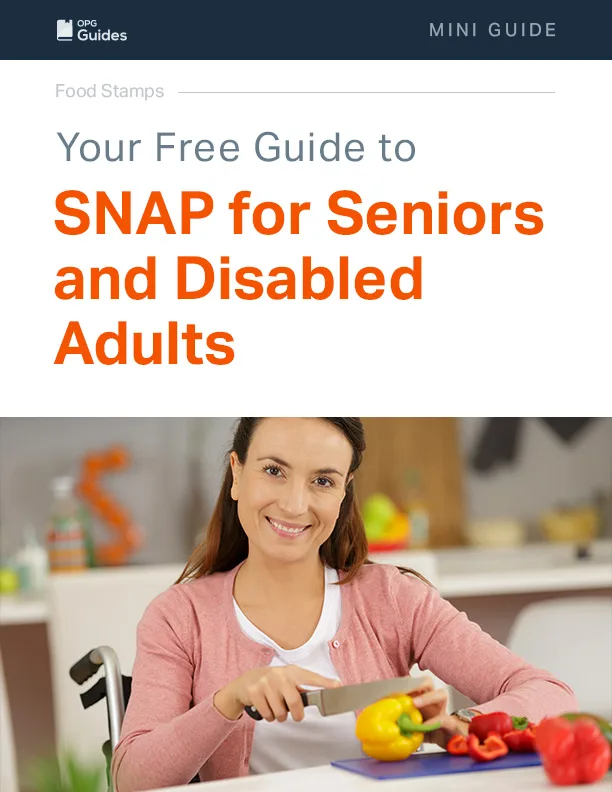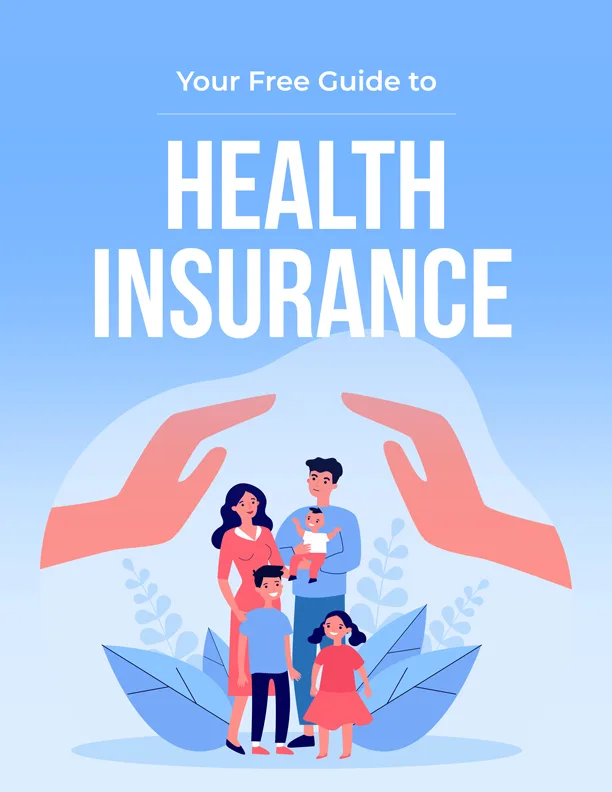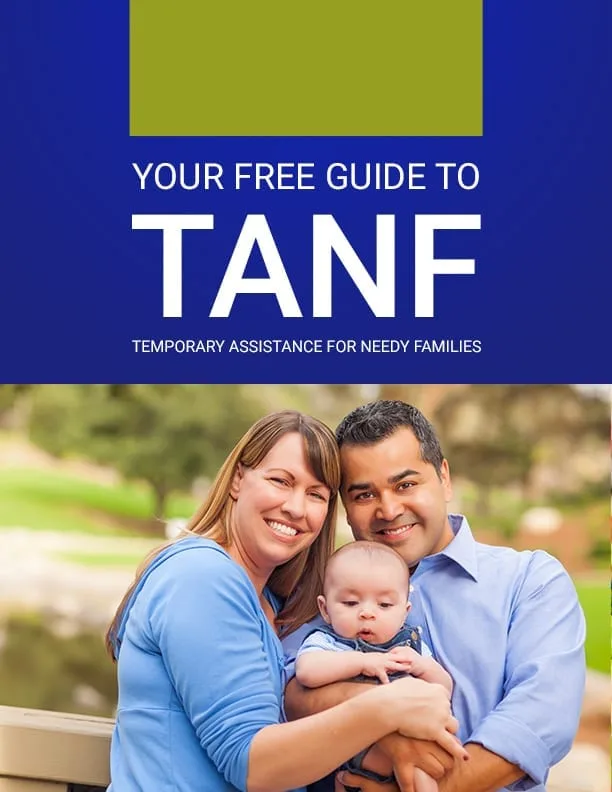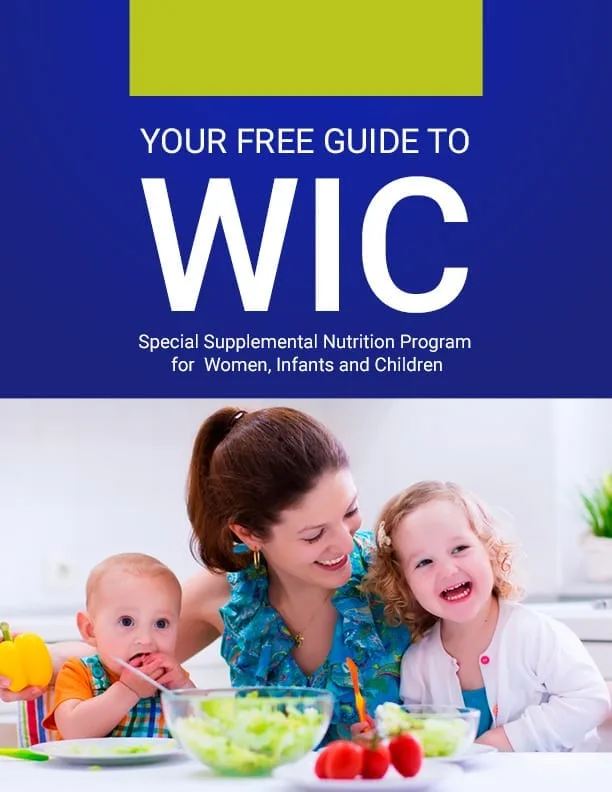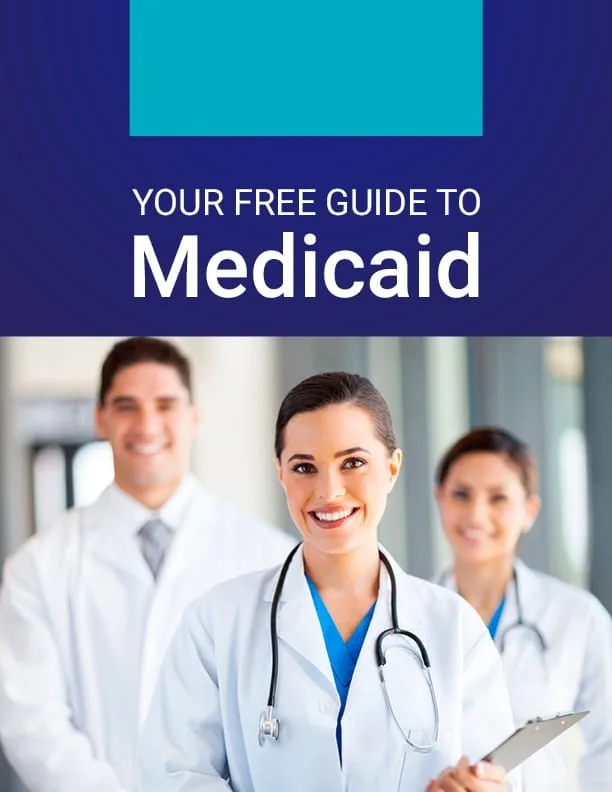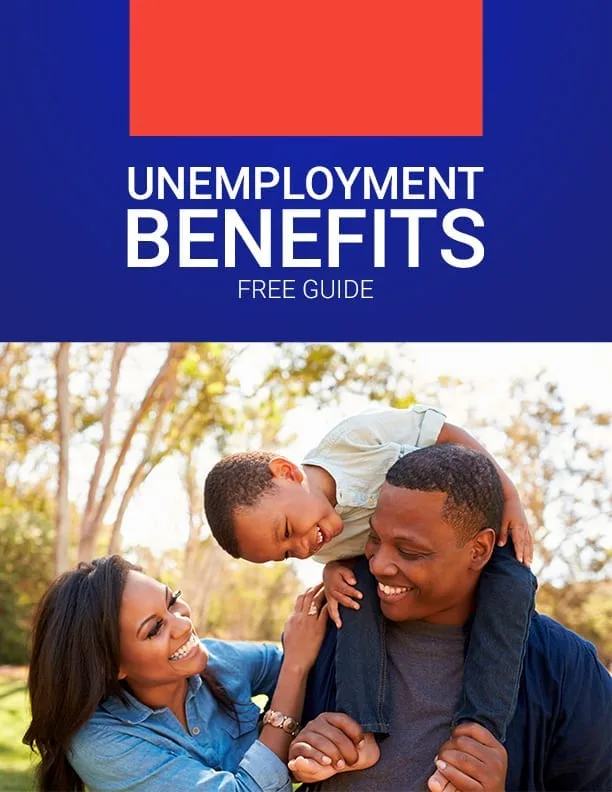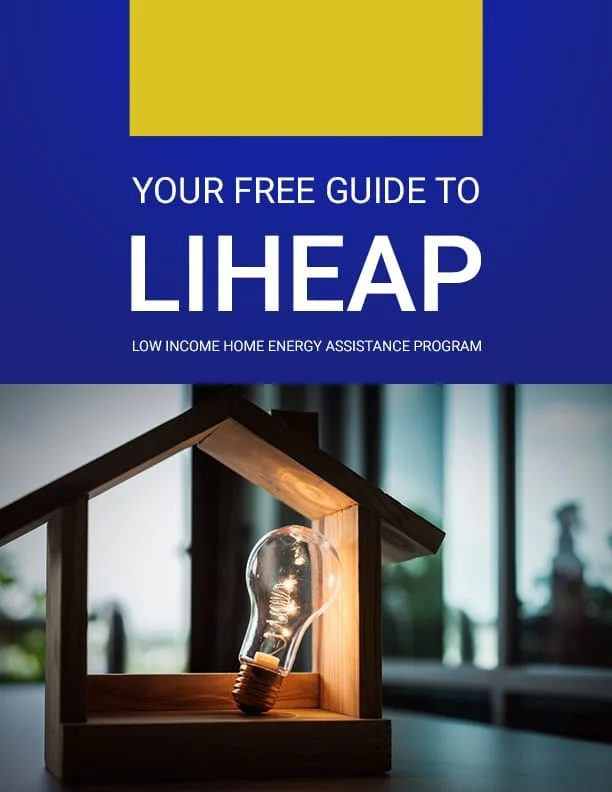Senior’s Guide to the Supplemental Nutrition Assistance Program (SNAP)
Senior’s Guide to the Supplemental Nutrition Assistance Program (SNAP)
We are privately owned and not affiliated with the government in any way or form.

Supplemental Nutrition Assistance Program (SNAP)
The Supplemental Nutrition Assistance Program (SNAP), also known as Food Stamps, is a federal program that provides nutrition benefits to millions of low-income individuals and families. The nutrition benefits are issued to beneficiaries once per month on an Electronic Benefits Transfer (EBT) card that can be used as a debit card at participating groceries to buy approved food items.
SNAP has assisted citizens and permanent residents of the United States for more than 75 years under the U.S. Department of Agriculture (USDA) and the Food and Nutrition Service (FNS). The program provides nutrition assistance, job assistance and education services that teach individuals and families how to eat healthy.
Seniors and SNAP
Seniors with low incomes can receive food assistance through the Supplemental Nutrition Assistance Program (SNAP), otherwise known as Food Stamps. Like candidates of other ages, they must meet certain program requirements that depend on factors like income, resources, expenses and citizenship.
There are some special considerations for SNAP applicants who fall into the “senior” category, which is individuals who are 60 years of age or older.
Normally, SNAP considers all members of an applicant’s household when determining program eligibility. However, seniors who cannot purchase and prepare meals due to a permanent disability can qualify as a “separate household” from the rest of its members if the other members they live with do not have very much income (no more than 165 percent of the poverty level). This can potentially increase the overall amount that the whole family qualifies for in benefits. Refer to the section “Monthly SNAP Allotments by Location” for allotment information.
Another special consideration for seniors (as well as disabled individuals) applies to where they get their meals. Normally, individuals are not eligible for SNAP benefits if they receive their meals from an institution. However, there are two exceptions:
Residents of federally subsidized housing for the elderly can be eligible for SNAP benefits, even if they receive their meals at the facility, as long as they meet all other program requirements.
Disabled individuals who live in certain nonprofit group living arrangements (small group homes with no more than 16 residents) may be eligible for SNAP benefits, even if the group home prepares their meals for them.
SNAP Program Name and Contact Information Directory
The dropdown menu below includes contact information for SNAP in each state and U.S. territory. Select the state you wish to know more about:
SNAP Program Name and Contact Information Directory
The dropdown menu below includes contact information for SNAP in each state and U.S. territory. Select the state you wish to know more about:
| Location | Program Name | Contact Information | Office Directory |
|---|---|---|---|
| Alabama | Food Assistance | Toll-free number: 1-833-822-2202 TTY: 1-833-822-2202 / 711 or 1-800-548-2546 | https://dhr.alabama.gov/county-office-contact/ |
| Alaska | Supplemental Nutrition Assistance Program (SNAP) | Hotline: 907-465-3347 | https://health.alaska.gov/en/resources/department-contacts/ |
| American Samoa | American Samoa Nutrition Assistance Program (ASNAP) | Hotlines: 684-633-7720 or 684-633-7451 | N/A |
| Arizona | Nutrition Assistance | Hotline: 1-800-352-8401 General information: 1-855-432-7587 TTY: 711 | https://des.az.gov/services/basic-needs/family-assistance/contact-family-assistance-administration-f |
| Arkansas | Supplemental Nutrition Assistance Program (SNAP) | Hotlines: 1-800-482-8988 / 501-682-8269 TTY/TDD: 501-682-7958 | https://humanservices.arkansas.gov/offices |
| California | CalFresh | Hotline: 1-877-847-3663 TYY: 711 | https://cdss.ca.gov/county-offices |
| Colorado | Supplemental Nutrition Assistance Program (SNAP) | Hotline: 1-800-536-5298 | https://www.colorado.gov/pacific/cdhs/contact-your-county |
| Commonwealth of Northern Mariana Islands | CNMI Nutrition Assistance Program (NAP) | Hotlines: 237-2801/237- 2802 Email: support@cnminap.gov.mp | https://www.dcca.gov.mp/contact/ |
| Connecticut | Supplemental Nutrition Assistance Program (SNAP) | Hotline: 1-860-424-5030 TTY: 800-842-4524 | https://portal.ct.gov/dss/About-the-Department-of-Social-Services/Contact |
| Delaware | Food Supplement Program | Hotline: 1-800-372-2022 TTY: 711 | https://www.dhss.delaware.gov/dhss/dss/contact.html |
| District of Columbia | Supplemental Nutrition Assistance Program (SNAP) | Hotline: 202-673-4464 TTY: 711 | https://dhs.dc.gov/snapinfo |
| Florida | Food Assistance Program (FAP) | Hotlines: 1-866-762-2237 / 850-300-4323 TTY: 711/ 1-800-955-8771 | https://www.myflfamilies.com/service-programs/access/map.shtml |
| Georgia | Georgia Food Stamp Program | Hotline: 1-877-423-4746 TTY: 1-800-255-0135 | https://dfcs.georgia.gov/locations |
| Guam | Supplemental Nutrition Assistance Program (SNAP) | Hotline: 671-735-7245 | https://dphss.guam.gov/bureau-of-economic-security/ |
| Hawaii | Supplemental Nutrition Assistance Program (SNAP) | Hotline: 855-643-1643 TTY: 711 | https://humanservices.hawaii.gov/wp-content/uploads/2013/01/Addresses-for-Benefits-Offices-Statewide.pdf |
| Idaho | Idaho Food Stamps | Hotline: 1-877-456-1233 TTY: 211/ 1-800-926-2588 | https://healthandwelfare.idaho.gov/ContactUs/tabid/127/Default.aspx |
| Illinois | Supplemental Nutrition Assistance Program(SNAP) | Hotline: 1-800-843-6154 TTY: 711/ 1-800-447-6404 | https://www.dhs.state.il.us/page.aspx?module=12 |
| Indiana | Supplemental Nutrition Assistance Program (SNAP) | Hotline: 1-877-768-5098 DFR toll-free phone: 1-800- 403-0864 TTY: 711 | https://secure.in.gov/apps/fssa/providersearch/map |
| Iowa | Food Assistance Program (FAP) | Hotline: 1-877-347-5678 / 1-888-426-6283 TTY: 1-800-735-2942 | https://hhs.iowa.gov/hhs-office-locations |
| Kansas | Food Assistance Program (FAP) | Hotline: 1-785-296-1491 | https://www.dcf.ks.gov/Pages/contacts.aspx |
| Kentucky | Supplemental Nutrition Assistance Program (SNAP) | Hotline: 800-372-2973 | https://kynect.ky.gov/benefits/s/find-dcbs-office?language=en_US |
| Louisiana | Supplemental Nutrition Assistance Program (SNAP) | Hotline: 1-888-524-3578 TTY: 1-844-224-6188 | https://www.dss.state.la.us/directory |
| Maine | Food Supplement Program (FSP) | Hotline: 877-463-6207 TTY: 711 | https://www.maine.gov/dhhs/about/contact/offices |
| Maryland | Food Supplement Program (FSP) | Hotline: 1-800-332-6347 TTY: 1-800-735-2258 | https://dhr.maryland.gov/local-offices/ |
| Massachusetts | Supplemental Nutrition Assistance Program (SNAP) | Hotline: 1-800-249-2007 TTY: 711 / 1-800-720-3480 / 1-866-930-9252 (SPA) | https://www.mass.gov/orgs/department-of-transitional-assistance/locations?_page=1 |
| Michigan | Food Assistance Program (FAP) | Hotline: 1-855-275-6424 TTY: 711 | https://mdhhs.michigan.gov/CompositeDirPub/CountyCompositeDirectory.aspx |
| Minnesota | Supplemental Nutrition Assistance Program (SNAP) | Hotline: 800-657-3698 (toll- free) TTY: 1-800-627-3529 | https://mn.gov/dhs/general-public/about-dhs/contact-us/counties-and-regional-offices/ |
| Mississippi | Food Assistance Program (FAP) | Hotline: 1-800-948-3050 General assistance: 601-359-4500 TTY: 711 / 1-800-735-2466 | https://www.mdhs.ms.gov/contact/ |
| Missouri | Food Stamp Program (FSP) | Hotline: 1-800-392-1261 TTY: 1-800-735-2966 | https://dss.mo.gov/dss_map/ |
| Montana | Supplemental Nutrition Assistance Program (SNAP) | Hotline: 1-800-332-2272 / 888-706-1535 TYY: 406-444-1421 | https://dphhs.mt.gov/HCSD/OfficeofPublicAssistance |
| Nebraska | Supplemental Nutrition Assistance Program (SNAP) | Hotline: 1-800-383-4278 TTY: 711 / 1-800-833-7352 | https://dhhs.ne.gov/DD%20Documents/DHHS-DD%20Main%20Directory.pdf#search=locations |
| Nevada | Supplemental Nutrition Assistance Program (SNAP) | Hotlines: 1-800-992-0900 / 775-684-0615 (ext. 40500) TTY: 1-800-326-6888 /1-800-992-0900 (voice) | https://dwss.nv.gov/Contact/Welfare/ |
| New Hampshire | Supplemental Nutrition Assistance Program (SNAP) | Hotline: 1-800-852-3345 (ext. 9700) TTY: 1-800-735-2964 / 711 | https://www.dhhs.nh.gov/about-dhhs/locations-facilities |
| New Jersey | Supplemental Nutrition Assistance Program (SNAP) | Hotlines: 1-800-792-9773 / 1-800-687-9512 TTY: 1-800-701-0720 | https://www.state.nj.us/humanservices/divisions/ |
| New Mexico | Supplemental Nutrition Assistance Program (SNAP) | Hotline: 800-432-6217 TTY: 1-877-294-4356 / 711 | https://www.hsd.state.nm.us/lookingforassistance/contact-us/ |
| New York | Supplemental Nutrition Assistance Program (SNAP) | Hotlines: 1-800-342-3009 718-557-1399 (NYC only) TTY: 711 / 212-504-4115 (NYC only) | https://otda.ny.gov/workingfamilies/dss.asp |
| North Carolina | Food and Nutrition Services | Hotline: 1-800-662-7030 TTY: 711 | https://www.ncdhhs.gov/divisions/social-services/local-dss-directory |
| North Dakota | Supplemental Nutrition Assistance Program (SNAP) | Hotline: 1-800-755-2716 TTY: 1-800-366-6888 | https://www.hhs.nd.gov/human-service/zones |
| Ohio | Food Assistance Program (FAP) | Hotline: 1-866-244-0071 TTY: 711 | https://jfs.ohio.gov/county/county_directory.pdf |
| Oklahoma | Supplemental Nutrition Assistance Program (SNAP) | Hotline: 1-866-411-1877 TTY: 711 | https://oklahoma.gov/okdhs/contact-us.html |
| Oregon | Supplemental Nutrition Assistance Program (SNAP) | Hotlines: 1-800-723-3638 / 503-945-5600 TTY: 503-945-5896 | https://www.oregon.gov/DHS/Offices/Pages/Self-Sufficiency.aspx |
| Pennsylvania | Supplemental Nutrition Assistance Program (SNAP) | Hotlines: 1-800-692-7462 1-800-451-5886 | https://www.dhs.pa.gov/Services/Assistance/Pages/Find%20Facilities.aspx |
| Puerto Rico | Programa de Asistencia Nutricional (PAN) | Hotlines: 311 / 787- 289-7600 TTY: 1-800-877-8339 | https://servicios.adsef.pr.gov/contactenos.aspx |
| Rhode Island | Supplemental Nutrition Assistance Program (SNAP) | Hotlines: 401-462-5300 / 401-785-3340 TTY: 711 / 1-800-745-6575 (Voice) / 1-800-745-5555 | https://www.dhs.ri.gov/DHSOffices/DHS-14FieldOfficeListingRev%2001-20.pdf |
| South Carolina | Supplemental Nutrition Assistance Program (SNAP) | Hotline: 1-800-616-1309 TTY: 711 / 1-800-735-8583 | https://dss.sc.gov/contact-dss/ |
| South Dakota | Supplemental Nutrition Assistance Program (SNAP) | Hotlines: 1-877-999-5612 / 1-866-854-5465 TTY: 711 | https://dss.sd.gov/findyourlocaloffice/ |
| Tennessee | Supplemental Nutrition Assistance Program (SNAP) | Hotline: 1-866-311-4287 TTY: 711 | https://www.tn.gov/content/tn/humanservices/for-families/supplemental-nutrition-assistance-program-snap/office-locator-family-assistance.html |
| Texas | Supplemental Nutrition Assistance Program (SNAP) | Hotlines: 211 (toll-free) / 1-877-541-7905 TTY: 711 | https://www.dshs.texas.gov/regions/default.shtm |
| U.S. Virgin Islands | Supplemental Nutrition Assistance Program (SNAP) | Hotline: 340-774-2399 | http://www.dhs.gov.vi/index.php/contact-us/ |
| Utah | Supplemental Nutrition Assistance Program (SNAP) | Hotlines: 1-866-526-3663 / 1-800-331-4341 TTY: 711 / 1-800-346-4128 | https://jobs.utah.gov/jsp/officesearch/#/map |
| Vermont | 3Squares VT | Hotline: 1-800-479-6151 TTY: 711 / 1-800-253-0191 | https://dcf.vermont.gov/fsd/contact/districts |
| Virginia | Supplemental Nutrition Assistance Program (SNAP) | Hotline: 1-800-552-3431 TTY: 1-800-828-1120 / 711 | https://www.dss.virginia.gov/localagency/index.cgi |
| Washington | Basic Food | Hotline: 1-877-501-2233 TTY: 711 | https://www.dshs.wa.gov/office-locations?field_geo-field_distance%5B-distance%5D=100&-field_geofield_dis-tance%5Bunit%5D=3959&-field_geofield_distance%5B-origin%5D=&field_office_type_tid%5B0%5D=9651 |
| West Virginia | Supplemental Nutrition Assistance Program (SNAP) | Hotline: 1-800-642-8589 TTY: 866-430-1274 (TTY) or 800-676-3777 (Voice) / 1-800-676-4290 (SPA) | https://dhhr.wv.gov/bcf/Pages/MapList.aspx |
| Wisconsin | FoodShare | Hotline: 1-800-362-3002 TTY: 711 / 1-800-947-3529 | https://www.dhs.wisconsin.gov/forwardhealth/imagency/index.htm |
| Wyoming | Supplemental Nutrition Assistance Program (SNAP) | Hotline: 307-777-5846 TTY: 711 / 1-800-452-1408 (TTY/Voice) | https://dfs.wyo.gov/about/contact-us/ |
Note:
Applicants from federally recognized Native American Tribal Nations should contact the administrative department in the state where their tribal nation is located.
How the “Big, Beautiful Bill” Affects SNAP for Seniors
A new law passed in 2025— called the “One Big Beautiful Bill”—includes tax cuts and major changes to government programs. One of the biggest changes affects SNAP, which provides food assistance to more than 40 million Americans, including millions of seniors.
This new law may make it harder for some older adults to qualify for or keep SNAP benefits, especially if they are between the ages of 55 and 64. It may also lead to changes in how states handle SNAP, which could impact seniors already on the program.
What’s Changing With SNAP for Seniors
New Work Rules for Older Adults
Right now, many adults must work at least 20 hours per week to get SNAP benefits for more than three months, unless they qualify for an exemption. The new law expands those work rules to cover more people, including:
- Adults ages 55 to 64
- Parents of children age 14 or older
- Some veterans
This means that some seniors who didn’t need to meet work requirements before may now be required to work or provide proof of an exemption in order to keep receiving SNAP.
You Could Lose Benefits for Simple Mistakes
Even seniors who are working might lose SNAP if they don’t report their hours correctly or miss a paperwork deadline. Studies show that millions of households may lose part or all of their SNAP benefits under the new law.
States May Cut Benefits
The law also puts more financial pressure on states. If a state has too many mistakes in how it handles SNAP—such as overpaying or underpaying benefits—it may be forced to pay part of the costs itself.
If your state can’t afford the extra expense, it might cut SNAP benefits or reduce the number of people who can receive them. That could leave many seniors without the help they rely on to buy groceries.
Other Changes to Know
- The law limits SNAP eligibility to U.S. citizens and lawful permanent residents.
- Missing a recertification deadline or submitting the wrong paperwork could still lead to a loss of benefits—even if you qualify.
- If children or grandchildren in your household lose SNAP, they could also lose free school meals or summer food benefits.
What Seniors Can Do to Protect Their Benefits
With these changes, it’s more important than ever for older adults to understand the rules and take steps to keep their SNAP benefits.
1. Find Out if You’re Now Affected
If you’re between 55 and 64, you may now have to meet work requirements. Contact your local SNAP office to see if these new rules apply to you and find out whether you’re exempt.
2. Keep Track of Deadlines and Documents
Don’t miss your SNAP renewal date or any requests for information. These deadlines are very important. Missing one can lead to a loss of benefits—even if you’re still eligible.
3. Watch for Changes in Your State
Since states may be forced to cover part of SNAP’s cost, they might decide to change how they run their programs. Stay informed through your local SNAP office, senior center, or community news.
General SNAP Eligibility for Seniors

The main factors in determining your eligibility for SNAP benefits are:
- Citizenship and state residency,
- Income,
- Work requirements, and
- Resource restrictions.
Continue reading the sections below to learn more about these categories of eligibility.
Citizenship and State Residency
To receive SNAP benefits, you must:
- Be a U.S. citizen or have an eligible residency status
- Be a resident of the state where you plan to claim benefits
SNAP benefits do not transfer from one state to another if you choose to relocate. Instead, you must close your SNAP account in one state, and then re-apply for SNAP in your new state of residence.
If you are not a U.S. citizen and would like to apply for SNAP, you must prove lawful presence in the country, along with meeting the other eligibility requirements related to both income and resources. If you are a noncitizen who meets the work, income, state residency and resource requirements for SNAP, you can still receive benefits if you are a Lawful Permanent Resident (LPR) who either has earned 40 quarters of work or can be credited with them.
Non-citizen adults must wait up to five years before collecting SNAP benefits if they are in any of the following situations:
- They have been paroled for at least one year by the Attorney General for urgent humanitarian reasons or for the benefit of the public
- They have been granted conditional entry into the U.S. from a Middle Eastern country and cannot return due to their race, religion or political opinion
- They have a pending family-sponsor petition with the Attorney General
However, if you fall into one of the following groups, you can collect SNAP benefits without having been a legal permanent resident for five years:
- Lawful permanent residents who meet certain work history requirements
- Children younger than 18
- Refugees who have been admitted under Section 207 of INA
- Asylees under Section 208 of the INA
- Individuals receiving blindness or disability benefits
- Individuals whose deportations are being withheld under 243(h) or 241(b)(3) of INA
- Amerasian individuals under 584 of the Foreign Operations, Export Financing and Related Programs Appropriations Act
- Entrants that are Cuban or Haitian as defined in 501(e) of the Refugee Education Assistance Act of 1980
- Veterans who were honorably discharged for reasons other than alien status, as well as their spouses and unmarried dependent children
- Individuals on active duty in the Armed Forces, as well as their spouses and unmarried dependent children
- Elderly individuals born on or before August 22, 1931, who were lawfully residing in the U.S. on August 22, 1996
Income
Income requirements are determined by SNAP. You and your household must meet income limits to be eligible for SNAP and receive benefits. You do not need to factor in if you are receiving additional government assistance benefits when you calculate your monthly income.
If your household earns a combined income that totals more than the defined poverty line, you will not receive SNAP benefits.
In most cases, you need to meet a monthly gross income requirement and an annual net income requirement.
- Gross income is the total amount of non-excluded income you earn before any deductions have been subtracted, while
- Net income is the total amount you earn minus taxes and any deductions.
Exceptions to this requirement are Puerto Rico and the Commonwealth of the Northern Mariana Islands, which consider only annual net income and monthly gross income, respectively. Households with elderly or disabled members also have different income requirements. They must only meet the net income requirement, as opposed to both the net and gross income requirements. Both are explained below.
What is the federal poverty level (FPL)?
The federal poverty level (FPL) is an economic measure that represents annual income and is used by the U.S. government to determine eligibility for SNAP.
The FPL is a set minimum amount of income a family needs to afford food, housing, clothing and other basic necessities. Every year, the Secretary of the Department of Health and Human Services updates the guidelines by considering the Consumer Price Index for All Urban Consumers (CPI-U). These values are then rounded and adjusted to the size of the household.
The FPL is not the same as the poverty threshold. The poverty threshold is another measure created by the U.S. Census Bureau and defines what poverty is and the number of Americans that live in poverty. The FPL is based on the statistical report of the poverty threshold.
The annual net income requirement is based on 100 percent of the federal poverty line. The table below contains the 2024 FPL income limits for the 48 contiguous states and Washington, D.C.
| Family Size | Annual Income Limit |
| 1 | $15,060 |
| 2 | $20,440 |
| 3 | $25,820 |
| 4 | $31,200 |
| 5 | $36,580 |
| 6 | $41,960 |
| 7 | $47,340 |
| 8 | $52,720 |
| For families/households with more than 8 persons, add $5,380 for each additional person. | |
The 2024 FPL chart for Alaska is as follows:
| Family Size | Annual Income Limit |
| 1 | $18,810 |
| 2 | $25,540 |
| 3 | $32,270 |
| 4 | $39,000 |
| 5 | $45,730 |
| 6 | $52,460 |
| 7 | $59,190 |
| 8 | $65,920 |
| For families/households with more than 8 persons, add $6,730 for each additional person. | |
The 2024 FPL chart for Hawaii is as follows:
| Family Size | Annual Income Limit |
| 1 | $17,310 |
| 2 | $23,500 |
| 3 | $29,690 |
| 4 | $35,880 |
| 5 | $42,070 |
| 6 | $48,260 |
| 7 | $54,450 |
| 8 | $60,640 |
| For families/households with more than 8 persons, add $6,190 for each additional person. | |
To calculate 100 percent of the FPL, divide your household net annual income by the FPL and multiply it by 100.
Income Eligibility for the 48 Contiguous U.S. States, Guam and the U.S. Virgin Islands
The table below shows figures that are valid from October 1, 2024 through September 30, 2025. The gross monthly income requirement is based on 130 percent of the federal poverty line. To calculate 130 percent of the FPL, divide your household gross monthly income by the FPL for your household size and multiply it by 130.
| Household Size | Gross Monthly Income | Net Monthly Income |
| 1 | $1,632 | $1,255 |
| 2 | $2,215 | $1,704 |
| 3 | $2,798 | $2,152 |
| 4 | $3,380 | $2,600 |
| 5 | $3,963 | $3,049 |
| 6 | $4,546 | $3,497 |
| 7 | $5,129 | $3,945 |
| 8 | $5,712 | $4,394 |
| Each additional member | +$583 | +$449 |
Income Eligibility for Alaska, Hawaii, Puerto Rico and the Northern Mariana Islands
Alaska Monthly Income Requirements (Effective 10/1/2024)
| Household Size | Gross Monthly Income | Net Monthly Income |
| 1 | $2,038 | $1,568 |
| 2 | $2,767 | $2,129 |
| 3 | $3,496 | $2,690 |
| 4 | $4,225 | $3,250 |
| 5 | $4,955 | $3,811 |
| 6 | $5,684 | $4,372 |
| 7 | $6,413 | $4,933 |
| 8 | $7,142 | $5,494 |
| Each additional member | $730 | $561 |
Hawaii Monthly Income Requirements (Effective 10/1/2024)
| Household Size | Gross Monthly Income | Net Monthly Income |
| 1 | $1,876 | $1,443 |
| 2 | $2,546 | $1,959 |
| 3 | $3,217 | $2,475 |
| 4 | $3,887 | $2,990 |
| 5 | $4,558 | $3,506 |
| 6 | $5,229 | $4,022 |
| 7 | $5,899 | $4,538 |
| 8 | $6,570 | $5,054 |
| Each additional member | $671 | $493 |
Puerto Rico Annual Income Requirements (2022)
| Household Size | Net Annual Income |
| 1 | $3,262 |
| 2 | $4,395 |
| 3 | $5,528 |
| 4 | $6,660 |
| 5 | $7,793 |
| 6 | $8,926 |
| 7 | $10,059 |
| 8 | $11,192 |
| Each additional member | $1,133 |
Commonwealth of Northern Mariana Islands Monthly Income Requirements (2021-2022)
| Household size | Gross Monthly Income |
| 1 | $1,396 |
| 2 | $1,888 |
| 3 | $2,379 |
| 4 | $2,871 |
| 5 | $3,363 |
| 6 | $3,855 |
| 7 | $4,347 |
| 8 | $4,839 |
| Additional member | $369 |
Note:
2024 – 2025 income information for Puerto Rico and CNMI was not available at the time of writing.
Resource Restrictions
There are two different types of resources that can be taken into account:
- Liquid resources: These can be readily turned into cash (bonds, stocks, money in savings accounts and credit unions, and uncashed checks, among others).
- Non-liquid resources: These cannot be turned quickly into cash. A few examples of non-liquid resources are houses, vehicles and livestock.
Some resources are not counted for this program:
- Your home and lot
- The resources of household members receiving SSI or TANF
- The balance of most retirement or pension plans
Resource Restrictions
If you apply for SNAP, you are only permitted to have a total of $4,500 in countable resources if you or another household member are at least 60 years of age or living with a disability. These values are valid through September 30, 2025.
Resource Restrictions on Vehicles
States have the right to determine whether to exempt or consider the equity value of the vehicle among a household’s countable resources. There is a federal SNAP vehicle resource test available for states that wish to follow it. This test has 3 steps:
- Determine which vehicles are exempted in your state. Unless expressly indicated by your state, vehicles are considered exempt when:
- They are used to produce income (taxi cabs, for example)
- They produce annual income consistent with their fair market value
- They are used for long-distance travel for work (for salespeople, for example)
- They are used to transport physically disabled household members
- They are used as the home of the household
- They are used to carry fuel for heat or water for the household
- Their value provides a return of $1,500 or less
- Evaluate the fair market value of any vehicle that is not exempted in step 1. The used car “Blue Book” (https://www.kbb.com/) is commonly used as reference. If the amount is more than $4,650, the amount will be considered among the household’s resources. Each vehicle must be considered separately.
- The equity test is the final step. To estimate the worth of non-liquid resources, you need to determine the equity value. Calculate the equity value by subtracting any debt the household has on the property from its fair market value (i.e. the amount of money you can get by selling that property today). If the equity value is below $1,500, then the resource will be excluded.
Resource Exemptions for Vehicles
If your household has any vehicles that are used to attend an interview for work, go to work, go to job training or drive to school, those will not be subject to an equity test.
If you own a vehicle with both a fair market value that exceeds $4,650 and an equity value, the highest amount of the two will be counted as a countable resource.
If you have an unlicensed vehicle, the equity value will be counted regardless of the fair market value.
SNAP Income Deductions
Once your household income is added together, certain deductions will be subtracted from the total gross income amount. There is a standard deduction in each state, but the amount varies.
The standard deduction varies according to the size of the household:
| Standard Deduction Amount (2024-2025) | |||||
| Area | Household Size (by Number of Members) | ||||
| 1-2 | 3 | 4 | 5 | 6+ | |
| 48 states + DC | $204 | $217 | $254 | $291 | |
| Alaska | $348 | $364 | |||
| Hawaii | $287 | $292 | $335 | ||
| Guam | $409 | $432 | $507 | $581 | |
| U.S. Virgin Islands | $180 | $217 | $254 | $291 | |
*Information for American Samoa, the Mariana Islands (CNMI) and Puerto Rico was not available online. Please contact their main offices for more information.
In addition to a standard deduction, the following deductions are allowed for all households:
- 20 percent of your earned income
- The cost of dependent child care you need while working, looking for a job or getting training or education to do a job
- Child support payments that you legally owe
- Shelter expenses that cost more than half of your income (limits apply unless there is an elderly or disabled household member)
- Medical expenses that exceed $35 per month for elderly or disabled household members
Below find the maximum amounts of shelter and homeless shelter deductions by region:
| Regions | Max. shelter deductions | Max. homeless shelter deductions |
| 48 contiguous states + DC | $712 | $190.30 |
| Alaska | $1,137 | $190.30 |
| Hawaii | $959 | $190.30 |
| Guam | $835 | $190.30 |
| U.S. Virgin Islands | $561 | $190.30 |
Deductions for American Samoa, the Commonwealth of Northern Mariana Islands and Puerto Rico are not available. Please contact your local office to learn more.
Work Requirements

Most seniors do not need to meet work requirements to receive SNAP benefits. However, if you are 59 years of age or younger, you are required to meet work requirements to receive SNAP benefits. The requirement is that you must “register for work.” Registering for work means that you must meet one of the following requirements:
- You will not quit a job where you currently work at least 30 hours per week.
- You will not reduce your hours to less than 30 hours per week.
- You will take a job if one is offered to you.
However, there are some exceptions to the work requirement. Individuals who meet one of the following conditions below are exempt from the SNAP work requirement:
- Already work at least 30 hours per week
- Meet the work requirements for another maintenance of effort (MOE) program (Temporary Assistance for Needy Families, Supplemental Security Income, or Unemployment Insurance)
- Are the caregiver for a child younger than 6 years of age or for a person who is incapacitated
- Are physically or mentally unfit for work
- Regularly take part in a drug or alcohol treatment program
How to Apply for SNAP Benefits
You should apply for SNAP benefits as soon as you need assistance. There is no waiting period to receive food stamps, but it can take up to 30 days for your application to be processed.
Depending on where you live, you can apply for food stamps in the following ways:
- Online
- By mail or fax
- In person
How to Apply Online
To apply for SNAP online, visit your state’s SNAP website. Note that the program may be under a different name in your location. You can find your state or territory’s SNAP program and corresponding contact information in the table found in the “SNAP Program Name and Contact Information by Location” section of this guide.
If your state or territory has an online application process, you may need to create an account with a username, password and PIN, which is a four-digit number. Once you have set up an account, follow the instructions for completing the online application form. If you are not required to create an account, there may be no way to save your progress on your application. Thus, you must complete the entire form in one sitting.
Once you have completed the required sections, you may submit the form. You should then receive a confirmation of your submission via email.
Many states recommend that you apply online because your claim will be processed more quickly. In addition, creating an online account will make it easier to check the status of your claim or update your application if your circumstances change.
How to Apply by Mail or Fax
Some locations allow you to submit a SNAP application by mail or fax. You can find out if your state or territory offers a mail or fax option by contacting its SNAP department. Refer to the table in the “Program Name and Contact Information by Location” section of this guide.
To apply by mail or fax, you must first download and print the application form from the website for your state. If forms are not available online, you may need to call and request an application be sent to you by mail.
Once you have completed the form, mail it to the street address or fax it to the fax number specified on your state or territory’s website. These addresses may also be found at the bottom of the application.
Some states that accept applications by mail recommend that you submit the form by fax. Fax submissions are faster and more secure than mail-in submissions.
How to Apply in Person
Call your state or territory’s main SNAP office to find out if you can request an application appointment to apply in person. On the day of your appointment, make sure to bring all required documents and information needed to apply. Refer to the following section “Information and Documents Needed to Apply” to know which documents you need to provide.
At the SNAP office, you should be able to obtain, complete and submit an application all in one visit. Please refer to the section “Program Name and Contact Information by Location” for more information.
Information and Documents Needed to Apply
During the SNAP application process, you will be required to provide personal and financial information and documents, as well as similar documents and details for anyone who is residing in your household.
You will be asked to provide proof of each household member’s:
- Identity
- Citizenship/residency
- Income, expenses and resources (if required)
- Disability (if applicable)
- School attendance (if applicable)
- Medical expenses
- This only applies if medical expenses total more than $35 per month
- Non-custodial parent information (if applicable)
Proof of Identity
- Driver’s license or state ID card
- School ID
- Birth certificate
- Medical insurance identification
- Voter’s registration card
Proof of Citizenship
The following documents may be used as proof of citizenship or permanent resident status:
- Birth certificate
- Naturalization certificate
- Permanent resident card (green card)
- Employment authorization card
- Letter from U.S. Citizenship and Immigration (USCIS) indicating your status
- U.S. passport
- Any official USCIS documentation or correspondence
Proof of Residency
- Utility bills
- Library card with address
- Rent or mortgage receipts with address
- Correspondence sent to your address under your name
- Voter’s registration card
Proof of Income
- Pay stubs
- Employer statement
- Social Security, SSI or Veterans Benefits documents
- Other retirement and disability benefits documents
- Alimony documents
- Child support documents
- Unemployment compensation
- Self-employment income documents
Proof of Medical Expenses
- Copy of each bill and proof of payment (if paid)
- Summary of medical services
- Receipts with reimbursed expenses
- Prescription bottles with cost label or printout
- Receipts of transportation and lodging expenses to obtain medical attention
- Statement of health insurance premiums
- Invoices or receipts of medical equipment
- Medicare prescription drug card
- Medical payment agreement
Proof of Other Expenses
- Dependent child care or child support documents
- Rent or mortgage payments
- Property insurance
- Property taxes
- Child care expenses
- Income summary with child support deductions from wages and salaries
- Home insurance policy
- Utility bill
Proof of Resources
- Bank statement or books
- Copies of securities, bonds or stocks
- Real estate deed or appraisal
Note:
Your state may accept other documents, so check before applying. If you cannot provide documents to prove the above requirements, speak with a SNAP employee to discuss your options as you await your SNAP application results.
How to Renew Benefits

To continue receiving SNAP benefits, recipients must recertify before the end of their benefits period. This process is also called redetermination or renewal.
If a recipient completes the recertification before the original certification period ends, benefit issuance will continue on schedule uninterruptedly for another two years for families with elderly or disabled members. Otherwise, families without seniors will only receive another year until renewal is required again.
If a recipient does not recertify, his or her benefits will end when the certification period ends.
The recertification process varies by state and territory. Some states require recipients to complete an interview in person, but most states only require a phone interview in order for a current beneficiary to be recertified for SNAP benefits. An application will also need to be submitted.
About 45 days before the end of a beneficiary’s certification period, most states will issue a notice of expiration (NOE) or recertification. The NOE includes:
- The date your household’s certification period comes to an end
- The date by which you need to submit the recertification application to continue receiving benefits
- The consequences of not submitting your application on time
- The notice of your right to have your application received as long as it is signed and you include your name and address
- Alternate methods you can follow to submit your recertification application (mainly for households with no means to reach a certification office for a representative to submit the form)
- Mailing information for the office the application must be sent to
- Information on your right to request a fair hearing if the recertification application is denied
- Notice explaining that households receiving Supplemental Security Income (SSI) can apply for recertification at a Social Security Administration office
- Notice that informs the household that if it does not attend the interview, benefits will be delayed or denied and that the household is responsible for scheduling a new interview and for providing verification documents
According to federal law, the NOE will be sent at least one day before the last certification period month begins, and you will get up to 15 days to send in your application.
The form that you receive will typically include pre-filled information, allowing you to simply rectify any changes that you have not yet reported to the SNAP office and submit the form for processing.
Refer to the section “Program Name and Contact Information by Location” for local contact information.
Monthly SNAP Allotments by Location
The amount of SNAP benefits you can receive per month is called an “allotment,” which is issued via an Electronic Benefits Transfer (EBT) card. Your EBT card works like a debit card; it will be loaded with your allotment each month and you can use it to purchase food at groceries and retailers that accept EBT payments.
To determine the amount of money you will receive (your allotment), follow the steps below:
- Multiply your net monthly household income by 0.3.
- The reason why you multiply your income by 30% is that SNAP households are expected to spend 30% of their income on food.
- Subtract that amount from the maximum monthly allotment for your household size in the chart below.
- The total you get is how much money you will receive each month.
Find out the maximum monthly allotments by household size for 48 U.S. states and District of Columbia below. The figures are valid through September 30, 2024.
The 2023-2024 minimum monthly allotments are listed below:
- 48 contiguous states and DC: $23
- Alaska: $30 – $46
- Guam: $34
- Hawaii: $42
- U.S. Virgin Islands: $30
The maximum monthly allotments for 2024 in the 48 contiguous U.S. states and the District of Columbia are listed in the table below.
| SNAP Benefits by Household Size (48 States + D.C.) | |
| Household Size | Maximum Monthly Benefit (10/1/2023 – 9/30/2024) |
| 1 | $291 |
| 2 | $535 |
| 3 | $766 |
| 4 | $973 |
| 5 | $1,155 |
| 6 | $1,386 |
| 7 | $1,532 |
| 8 | $1,751 |
| Each additional person | $219 |
The allotment amounts for Alaska, Hawaii, Guam and the U.S. Virgin Islands are different. You can find them below:
| SNAP Benefits by Household Size (Alaska) | |||
| Household Size | Maximum Monthly Benefit (10/1/2023 – 9/30/2024) | ||
| | Alaska Urban | Alaska Rural 1 | Alaska Rural 2 |
| 1 | $374 | $477 | $581 |
| 2 | $686 | $875 | $1,065 |
| 3 | $983 | $1,253 | $1,525 |
| 4 | $1,248 | $1,591 | $1,937 |
| 5 | $1,482 | $1,890 | $2,300 |
| 6 | $1,778 | $2,268 | $2,760 |
| 7 | $1,966 | $2,506 | $3,051 |
| 8 | $2,246 | $2,865 | $3,487 |
| Each additional person | $281 | $358 | $436 |
| SNAP Benefits by Household Size (Hawaii) | |
| Household Size | Maximum Monthly Benefit (10/1/2023 – 9/30/2024) |
| 1 | $527 |
| 2 | $967 |
| 3 | $1,385 |
| 4 | $1,759 |
| 5 | $2,088 |
| 6 | $2,506 |
| 7 | $2,770 |
| 8 | $3,166 |
| Each additional person | $396 |
| SNAP Benefits by Household Size (Guam) | |
| Household Size | Maximum Monthly Benefit (10/1/2023 – 9/30/2024) |
| 1 | $430 |
| 2 | $788 |
| 3 | $1,129 |
| 4 | $1,434 |
| 5 | $1,703 |
| 6 | $2,044 |
| 7 | $2,259 |
| 8 | $2,581 |
| Each additional person | $323 |
| SNAP Benefits by Household Size (U.S. Virgin Islands) | |
| Household Size | Maximum Monthly Benefit (10/1/2023 – 9/30/2024) |
| 1 | $375 |
| 2 | $688 |
| 3 | $985 |
| 4 | $1,251 |
| 5 | $1,485 |
| 6 | $1,782 |
| 7 | $1,970 |
| 8 | $2,252 |
| Each additional person | $282 |
Note:
Allotment information for American Samoa and Puerto Rico are not available. Please contact your local office for more information.


